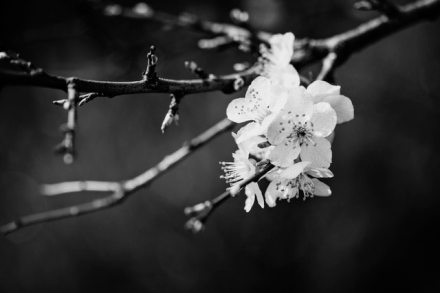
Her fingers—small, delicate digits—weave a complicated pattern in the air as she tells the day’s secrets to an audience of dolls. My daughter, in a world of her own. I can’t translate her movements, all her emphatic whisperings. What I would give to understand, to see as she sees.
I step away from her doorway, away from the doting mother’s pause, and enter into some bubble of memory as I gather and straighten, fold and tuck. In a previous life, for much of my youth, and then for a brief time at university, I was a flautist. I had felt that it was my one connection to the divine. And that, in itself, strangely was eventually painful enough to make me quit forever—I did not feel worthy, felt broken by my bad choices. A beautiful thing, a carefully polished silver, sinking slowly into shit.
And so I walked away. But for years and years after, my fingers still moved through a favorite riff while standing in line at the grocery store or at the post office, while perusing poetry in a used bookshop, as I stood in a doorway and watched my first husband getting into a car with a woman he had been seeing. “Sakura.” I must have learned it in junior high, held it like a talisman against my constant misery. This was before I knew anything of Japan, or of the brief lives of its most sacred blossoms.
Certain memory, they say—are now saying—is written in the DNA, is passed down to our offspring through chemical markers. The smell of a certain flower, for instance, at the moment of the mother’s injury, in her youth—some trauma to the body or the heart—will then trigger a reaction in the future daughter upon encountering the same flower. In this way we are echoed constantly into the future, as if the color of our eyes, the texture of our hair, the shape and length of our limbs were not enough.
I don’t know if this is a tragic or merely poignant scientific revelation. There must be layers of complexity that we can and cannot see. There are the variables. Unable to grasp it all, we follow the distilled and careful line of scientific method, follow that singular thread of truth in and out of an eternal weave.
And what of the ethics of it all? Should we now aim to have children before an accumulation of hurt? Or later, when we have both an abundance of loss—but also a better understanding of it? Which is the better legacy? What will and will not translate across time and DNA?
Now my daughter stands watching me with curious eyes from my own bedroom doorway, as my fingers move through air. “Sakura”—yes—still there in the body-memory of sinew, muscle, bone. She laughs and enters the room to makes a game of it, lifts her hands to play along with me.
Our duet, our genetic symphony.

Hey! Question off topic. What does the wallpaper mean? I’ve seen it in some places and I even got a t-shirt with it. Thanks!
You have a good eye! This subtle pattern can be found on all things Japanese, old and new—ceramics, washi, kimono, other textiles. It is a stylized representation of ocean waves, and I believe it suggests “waves” of luck. Look up “seigaiha” for more (fascinating) details.
Thank you very much for your time Tracy! Greetings from Argentina.
Beautiful writing Tracy, as always. Interesting insight to the genetic memory – how much of it, I wonder, translates into behaviours and reactions that people have not only in their lifetime, but over generations. I wonder too, what traumas my birth mother had in her life that ended up following me into mine.
Thank you, Rachelle. Genetic memory is indeed a fascinating concept. What traumas, what joys echo from one generation to the next? I’m curious to see what the science continues to reveal.
As always, my highest praise can only be measured by the extent of my fierce jealousy. Beautiful work.
Thank you, my friend.
I stumbled across your blog years ago, before becoming a mother myself. I now pop back in when I remember and find new meaning in your thoughtful, poetic words.
Thank you for sharing as always.
Oh! I’m so sorry for this belated reply. . . Thank you, Natalie, for your lovely comment. Parenting—it’s quite an experience, isn’t it? Wishing you and yours well.